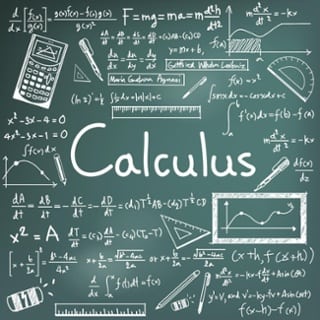
Appropriately named from the Latin word meaning “small stone,” calculus studies changes in variables over time at infinitesimally small intervals. Whether taken in high school or college, as a capstone or a prerequisite, this math course has the potential to excite and intimidate learners of all ages. Here are four common misconceptions that students have about calculus and its applications:
1) The Subject Matter is Too Difficult
Many students hear the word calculus and immediately picture a frantic individual working out lengthy equations on a chalkboard, similar to Russell Crowe’s portrayal of John Nash in A Beautiful Mind or Matt Damon’s character in Good Will Hunting. Like mastering a foreign language, calculus, too, has its own notation and symbols that students need to be able to use and understand in order to be successful. But it is important for students to realize that calculus is just a further extension of their knowledge of functions, graphs, and areas from algebra and geometry. Calculus is composed of differential calculus, which deals with rates of change, and integral calculus, which covers accumulation. These two branches of calculus may sound scary, but they merely introduce a pair of inverse operations—differentiation and integration—similar to addition and subtraction; one undoes the other.
2) Infinity is a Numerical Value

This misconception often arises when students begin evaluating limits of functions with unbounded behavior. Consider the graph of the function f(x)=1×2 below.
To determine whether or not the limit exists as x approaches 0, a student would most likely use the definition of the existence of a limit at a point. This definition states that the limit of a function f(x) as x approaches c exists if and only if both one-sided limits exist and are equal to some number, L. When a student sees a limit expression equal to infinity, such as x0f(x)=, it’s only natural to jump to the conclusion that the limit exists since the function approaches the same value, infinity, from both sides.
In doing so, these students incorrectly interpret infinity to represent this numerical value, L. Infinity can describe the behavior of a function at a point, but infinity is not a number technically, so the limit at that point does not exist.
3) Notation, Notation, Notation
As previously mentioned, some students are frightened by calculus because of its unfamiliar and potentially confusing notation. This influx of new symbols and mathematical language in such a short time creates opportunities for incorrect or improper uses of notation, ranging from dropping the constant of integration when evaluating indefinite integrals to misusing when differentiating. While these might seem like relatively minor mistakes or omissions to students, including these errors when presenting a solution can change the whole meaning of the problem. Remind students that using the appropriate notation when solving a problem step by step is just as important as arriving at a correct answer.
4) Only Mathematicians and Engineers Need Calculus

As in most upper-level mathematics courses, students tend to pose the question “When am I going to use this?” Some teachers and texts only reference applications in sciences, like physics and biology, in response to this question—which, in turn, limits students’ own views toward the practicality of learning calculus. Unfortunately, the general education requirements at most higher education institutions perpetuate this misconception by only requiring students majoring in hard sciences to take calculus. Yes, most topics covered in calculus will not be used on a day-to-day basis, but these topics can help students understand how the world works. The concepts learned in calculus help create mathematical models to find the number of items a business should produce to make an optimal profit or determine the distance a car has traveled from its speed alone.
In what other ways can these student misconceptions about calculus be addressed?




